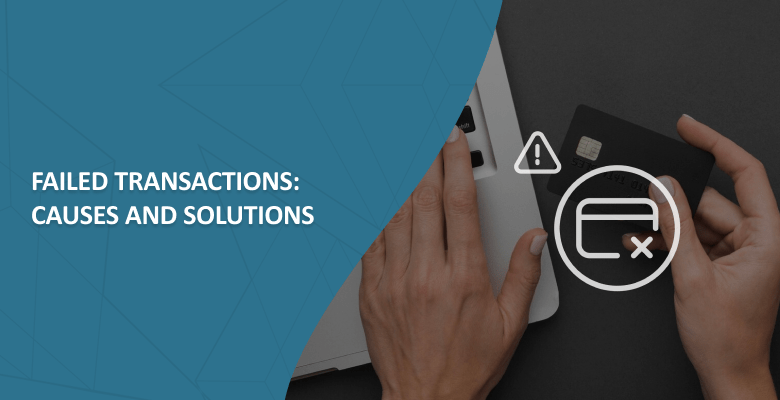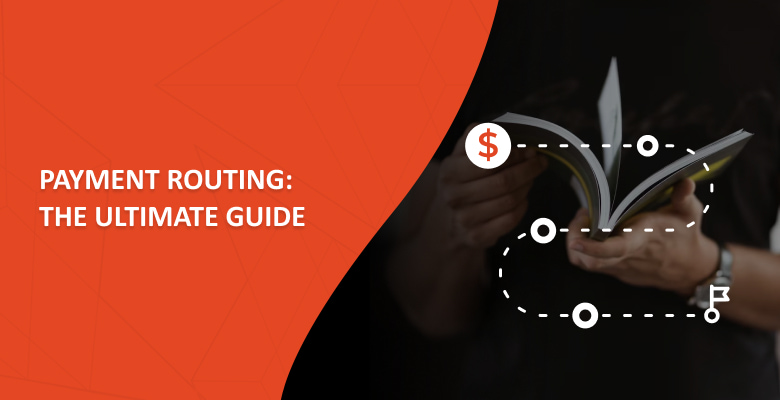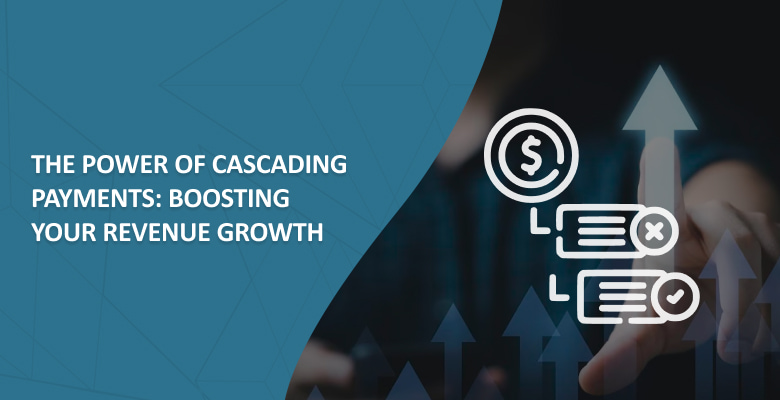
- What is the purpose of payments monitoring?
- Benefits of a Payment Monitoring System
- How a Payment Monitoring System Works
- Who benefits from payment monitoring?
- Types of Monitored Operations
- Key functional capabilities of a payment monitoring system
- Example of Successful Implementation
- How Akurateco can help with monitoring payments
- Conclusion
- Frequently Asked Questions
Digital payments adoption is now on the rise across diverse sectors, including banking, e-commerce, healthcare, travel, high-risk industries, and beyond. That is why it is crucial for companies not only to integrate online payments into their websites but also to manage them effectively.
That’s where advanced payment monitoring system and orchestration come into play.
At Akurateco, we empower businesses with a powerful white-label payment orchestration platform that includes real-time payment monitoring as a core feature. Whether you’re facing high decline rates, low conversions, or rising chargebacks, our technology is built to help you optimize and scale.
What is the purpose of payments monitoring?
Payment monitoring is commonly used by businesses and enterprises to track and manage their payments. Its primary purpose is to identify problems and shortcomings in processing transactions in order to address them and ensure a smooth, secure, and efficient payment experience.
Suppose an e-commerce store experiences an unusually high rate of declines in certain countries. To troubleshoot, they need to uncover the reason behind it. A payment monitoring system like Akurateco’s allows merchants to track metrics in real time, isolate the root cause, and take immediate action.
Benefits of a Payment Monitoring System
Payment monitoring offers several benefits to businesses, including:
Financial control
Without proper oversight of payment processes, businesses may find themselves operating in the dark. With payment monitoring, merchants gain greater control over their transactions. They can adapt transaction processing to their business needs, solving industry-specific challenges for effective payment management.
Fraud detection and prevention
One of the critical benefits of payment monitoring systems is identifying potentially fraudulent transactions. The system uses techniques and tools that analyze transaction data, detect unusual patterns, and trigger responses to mitigate fraud. Furthermore, businesses can set specific rules within the system. For instance, if a transaction exceeds a predefined limit, the system may trigger an alert or block the transaction for further review.
Data-driven business decisions
As analytics and reporting are integral to a payment monitoring system, it gives merchants in-depth insights into their payment processes and overall business performance. They automatically collect and aggregate data from various sources, including integrated banks and payment providers, payment processors, and financial databases, gathering it under one roof. Data-driven approaches allow businesses to make more informed decisions.
Enjoyable customer experience
By utilizing payment monitoring insights, businesses can address existing challenges and detect potential transaction processing issues in their early stages. This will prevent them from impacting the customer experience. As a result, a positive checkout experience will foster customer loyalty, encouraging them to make more purchases at a merchant’s website or application in the future.
How a Payment Monitoring System Works
The cycle of transaction monitoring breaks down into several phases. They consist of:
Phase 1: Payment system integration
The initial phase begins when the client integrates their payment system. It identifies initial transaction metrics that provide the groundwork for future analysis. They include data related to transaction volumes, approval rates, decline rates, and more. At this stage, businesses configure payment system settings, transaction processing parameters, anti-fraud configuration, and transaction thresholds.
Phase 2: Establishing routine operation
The secondary phase of monitoring payment transactions begins once the initial setup is complete and the business operates smoothly within the integrated payment system. In this phase, the merchant becomes well-versed in using the system and its technologies. Here, the payments monitoring system collects transaction data, including payment trends, system performance, and others. This data provides insight into how the system operates under normal, stable conditions.
Phase 3: Performing ongoing transaction monitoring
The third and final phase of the transaction monitoring cycle involves continuous monitoring as an integral part of business operations. Here, transaction monitoring remains an ongoing process. It includes real-time tracking of transactions, allowing anomalies or issues to be detected in real-time. The data collected during this phase is analyzed to gain insights into payment patterns and system performance. Businesses use these insights to make improvements, refine payment processes, and optimize system efficiency.
Who benefits from payment monitoring?
Payment monitoring is essential for:
- Merchants who want to increase approval rates and optimize processing costs.
- PSPs who manage multiple merchant accounts and need real-time visibility.
- Marketplaces and aggregators who handle large volumes of transactions.
- High-risk businesses where monitoring is critical for fraud prevention and compliance.
With Akurateco, each of these players gains full control over their payment flow with customizable dashboards, instant alerts, and granular filtering by provider, country, currency, and more.
Types of Monitored Operations
It’s crucial to emphasize that there are no equally efficient types of monitored operations suitable for all businesses. Merchants track payment metrics depending on the nature of their specific industry. For instance, crucial metrics for high-risk and low-risk companies differ significantly. Therefore, their payment software or monitoring system provider should offer businesses the necessary tools to track the relevant metrics to their operations.
Here are some frequently monitored metrics:
Transaction volume
Monitoring transaction volume over a specific period, such as a day, month, or year, is vital for businesses to identify changes in demand, peak transaction periods, and trends in customer engagement. This enables companies to make predictions and strategic plans.
Transaction value
Transaction value is the total monetary worth of all transactions processed during a given period. It helps understand revenue trends, sales performance, and the average transaction size needed to set financial goals and objectives, optimize pricing strategies to increase revenue, etc.
Conversion rate
The conversion rate shows the percentage of successfully completed transactions compared to all attempted transactions. Monitoring payment conversion rates helps businesses identify the efficiency of their customers’ current checkout experience. A high conversion rate indicates a seamless checkout experience, while a low rate indicates the need for improvements in the user experience, payment options, or transaction processing.
Decline rate
The decline rate indicates the percentage of transactions declined during payment processing. Multiple declines can negatively impact business revenue, lower customer experience, spoil bank relations, and result in increased transaction processing fees. Analyzing the decline rate helps businesses address underlying issues, optimize payment flow, and reduce the number of declined transactions.
Chargeback rate
Customers dispute or reverse transactions through chargebacks. Monitoring this metric is vital for businesses, as a high chargeback rate can lead to financial losses and reputational damage. By conducting chargeback payments monitoring, businesses can detect fraudulent activity in the early stages. Then, they can take action to prevent chargebacks and improve customer support to reduce disputes and maintain trust.
Geographical data
Customers’ geographical data provides insights into customer demographics, target markets, and payment preferences. It helps businesses tailor marketing and payment strategies to specific regions. It is also vital for detecting unusual or unauthorized transaction locations, which can be an early warning sign of fraud or security breaches.
Plus, in countries with strict transaction regulations, monitoring the ratio of transactions originating from the client’s country of residence in comparison to transactions from other countries is vital. This helps ensure compliance with regulations, prevent fraud, and maintain the security and integrity of transactions.
Preferred payment methods
Businesses can enhance the efficiency of their checkout process not only by analyzing geographical data but also by understanding their customers’ paying preferences. It is particularly valuable for businesses with a presence in diverse regions, as customer payment preferences can differ significantly, so their checkout process must be adjusted accordingly.
Fraud detection
Monitoring fraud detection metrics measures the fraud detection system’s accuracy and efficiency. Payments monitoring solutions assess the number of flagged or blocked transactions and the success rate in preventing fraud. Businesses rely on fraud detection metrics to safeguard financial operations, protect customer data, and maintain a secure payment environment.
By using Akurateco’s platform, businesses can monitor all of these from a single interface, across regions, currencies, and providers.
Key functional capabilities of a payment monitoring system
Payments monitoring solutions have numerous functional capabilities to help businesses manage and optimize payment processes. Here are some of the key operational capabilities of these systems:
Transaction tracking
With systems that monitor payments, transactions are tracked in real-time. It means that a merchant can instantly access essential details such as transaction value, method of payment, time of transaction, etc. It helps businesses to identify and resolve issues in the payment process whenever they occur.
Issue resolution
Payment transaction monitoring is used to identify shortcomings in transaction processing quicker and more efficiently. By continuously tracking transactions in real-time, these systems identify issues as they arise, such as slow response times, high transaction failure rates, or unusual transaction patterns. Naturally, detecting issues beforehand is a key to their resolution.
Checkout optimization
Monitoring payment systems can provide insights into customer behavior that can be used to improve the checkout process. This allows merchants to pinpoint the geographical origins of their customers and tailor the checkout experience by adjusting language options to enhance customer comfort. Furthermore, they can identify their customers’ payment preferences in different regions, adjusting them accordingly to create a seamless payment experience.
Manual processes’ automation
Payments monitoring solutions are quite cost-effective. When merchants rely on manual payment monitoring, their employees spend considerable time on it. In contrast, systems that perform payment monitoring automatically handle this task, reducing your employees’ workload and allowing them to focus on other business responsibilities.
Example of Successful Implementation
Each industry has unique monitoring needs, so successful implementation examples can significantly differ across various sectors. Let’s illustrate a case of effective payment monitoring in the context of a high-risk dating website.
The main problem that dating websites commonly face is a high number of churned customers. Inactive subscribers who paid for dating services but were not using them are at an increased risk of initiating chargebacks, potentially causing revenue loss for the business.
Monitoring payments, in this case, has the following objectives:
- Identify churn customers who canceled their subscriptions within the initial three months of purchase.
- Monitor and proactively engage with these inactive subscribers to prevent potential chargeback requests.
- Identify strategies to re-engage these customers and encourage them to keep using the dating service in the future.
Here are the steps for its implementation:
- Real-Time Monitoring: First, the dating platform needs to identify churned customers based on their cancellation date within the first three months of subscription. For this, the payment monitoring system provides real-time tracking of subscriber activity and transactions. It allows the merchant to monitor user behavior and detect inactivity signs promptly.
- Proactive Outreach: Upon identifying inactive subscribers, the platform’s customer support team initiates a proactive outreach campaign, inviting these customers to re-engage with the service.
- Feedback Collection: During interactions with churned customers, the platform collects feedback to understand the reasons behind their inactivity. This data is valuable for refining the dating service and addressing user concerns.
- Retention Strategies: To facilitate re-engagement, the dating platform introduces retention strategies. Among them are offering free premium features, extending trial periods, etc.
- Continuous Monitoring: The payment monitoring system continues to track customer behavior, looking for signs of re-engagement or chargeback requests.
As a result, the implementation of payment monitoring results in a significant reduction in chargeback requests from inactive subscribers. By identifying and re-engaging with these customers, the dating platform successfully retains a considerable number of users who might otherwise have requested chargebacks. Furthermore, the platform’s improved understanding of customer preferences, gathered through feedback, allows them to refine their services and enhance the overall user experience.
How Akurateco can help with monitoring payments
For a successful payment monitoring implementation, businesses require professional knowledge. Akurateco offers white-label payment orchestration software led by a team with more than 15 years of practical experience in online payments. The company provides a comprehensive system that gathers over 500 payment integrations and cutting-edge technologies under one roof, including payment monitoring. Our seasoned experts possess a deep knowledge of how monitoring functions and a profound understanding of the internal system resources leveraged for monitoring.
Among the services we offer our clients for monitoring payments are:
Comprehensive reporting and built-in analytics
Using comprehensive reporting with detailed information on each transaction, our system empowers PSPs and merchants to swiftly evaluate their overall payment processing performance.
They can independently examine the required data based on different factors, such as information on specific payment providers, banks, etc. Plus, clients can use automated reports that are already in the system. By doing this on a regular basis, they can follow up on the required metrics.
Also, they can create reports from CSV files or independently retrieve data from our system using their own payment monitoring tools.
Expert assistance
As an additional option, Akurateco can offer the services of a dedicated expert who will consistently and professionally monitor the payment metrics that hold significance for your business using the system’s internal tools. The company’s experts will provide valuable assistance in addressing any potential issues.
Problem-solving
As Akurateco provides an end-to-end payment system, it offers not only instruments to monitor payments but also technologies to address problems businesses may face, such as high chargebacks and decline rates, low conversions, and more. Among the cutting-edge features that Akurateco provides are intelligent routing, cascading, fraud prevention, network tokenization, and many more.
Conclusion
In today’s competitive payment landscape, real-time payment monitoring is no longer optional — it’s a must-have. Whether you’re a merchant, PSP, or marketplace, visibility into your payment flows enables you to act quickly, prevent revenue loss, and provide a better customer experience.
Akurateco’s white-label platform combines advanced monitoring, intelligent routing, fraud prevention, and reporting in one centralized system, giving businesses a competitive edge in a crowded market.
Frequently Asked Questions
What is a payment monitoring system?
A payment monitoring system is a technology platform or tool designed to track, analyze, and manage payment transactions in real time. It ensures that all payments are processed correctly, securely, and efficiently while helping businesses identify potential issues such as fraud, failed transactions, or compliance risks.
What are transaction monitoring tools?
Payment transaction monitoring tools are technologies designed to track and analyze transactions automatically. They are crucial for identifying anomalies, potential fraud, and irregularities within transactions to ensure security, compliance, and efficient business operations.
What is the purpose of monitoring transactions?
The purpose of monitoring transactions is to ensure that payments are processed securely, efficiently, and accurately. It helps detect and prevent fraudulent activity, minimize errors, and resolve issues that could lead to transaction failures or delays. By actively monitoring transactions, businesses can identify patterns of suspicious behavior, ensure compliance with regulations, and improve security.
What is the difference between payment screening and transaction monitoring?
Payment screening is a process for assessing the legitimacy of a transaction before approving or processing it. In contrast, transaction monitoring occurs after transaction completion to detect unusual patterns or suspicious activities. This helps in identifying potential fraud or compliance issues after the transaction has occurred.
How do you monitor payments in real time?
Monitoring payments in real time is achieved through specialized, ready-made infrastructure that continuously tracks and analyzes transactions as they occur.
What is a transaction monitoring solution?
A transaction monitoring solution is a software tool that systematically tracks and analyzes transactions to identify suspicious or unusual patterns that may indicate fraud, money laundering, or compliance issues.






